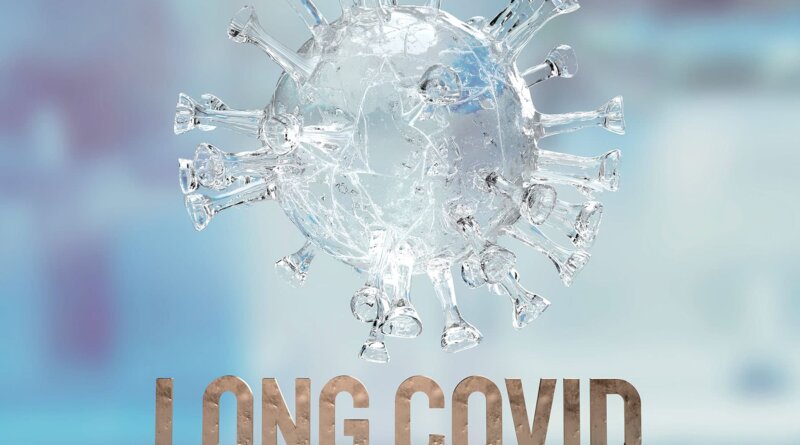For Many, Long COVID’s Impacts Go On And On, Major Study Says
Oct. 12, 2022 – About 1 in 20 people with long COVID continue to live with symptoms at 18 months, and another 42% reported only some improvement in their health and wellbeing in the same time frame, a large study out of Scotland found.
Multiple studies are evaluating people with long COVID in the hopes of figuring out why some people experience debilitating symptoms long after their primary infection ends and others either do not or recover more quickly.
This current study is notable for its large size – 96,238 people. Researchers checked in with participants at 6, 12 and 18 months, and included a group of people never infected with the coronavirus to help investigators make a stronger case.
“A lot of the symptoms of long COVID are non-specific and therefore can occur in people never infected,” says senior study author Jill P. Pell, head of the School of Health and Wellbeing at the University of Glasgow in Scotland.
Ruling Out Coincidence
This study shows that people experienced a a wide range of symptoms after becoming infected with COVID-19 at a significantly higher rate than those who were never infected, “thereby confirming that they were genuinely associated with COVID and not merely a coincidence,” she says.
Among 21,525 people who had COVID-19 and had symptoms, tiredness, headache and muscle aches or muscle weakness were the most common ongoing symptoms.
Loss of smell was almost 9 times more likely in this group compared to the never infected group in one analysis where researchers controlled for other possible factors. The risk for loss of taste was almost 6 times greater, followed by risk of breathlessness at 3 times higher.
Long COVID risk was highest after a severe original infection and among older people, women, Black and South Asian populations, people with socioeconomic disadvantages and those with more than one underlying health condition.
Adding up the 6% with no recovery after 18 months and 42% with partial recovery means that between 6 and 18 months following symptomatic coronavirus infection, almost half of those infected still experience persistent symptoms.
Vaccination Validated
On the plus side, people vaccinated against COVID-19 before getting infected had a lower risk for some persistent symptoms. In addition, Pell and colleagues found no evidence that people who experienced asymptomatic infection were likely to experience long COVID symptoms or challenges with activities of daily living.
The findings of the Long-COVID in Scotland Study (Long-CISS) were published Wednesday in the journal Nature Communications.
‘More Long COVID Than Ever Before’
“Unfortunately, these long COVID symptoms are not getting better as the cases of COVID get milder,” says Thomas Gut, DO, Medical Director for the Post COVID recovery program at Staten Island University Hospital in New York City. “Quite the opposite – this infection has become so common in a community because it’s so mild and spreading so rapidly that we’re seeing more long COVID symptoms than ever before.”
Although most patients he sees with long COVID resolve their symptoms within 3 to 6 months, “We do see some patients who require short-term disability because their symptoms continue past 6 months and out to 2 years,” says Gut, who is also , hospitalist at Staten Island University Hospital / Northwell Health.
Patients with fatigue and neurocognitive symptoms “have a very tough time going back to work. Short-term disability gives them the time and finances to pursue specialty care with cardiology, pulmonary and neurocognitive testing,” he says.
Support the Whole Person
The burden of living with long COVID goes beyond the persistent symptoms. “Long COVID can have wide-ranging impacts — not only on health but also quality of life and activities of daily living [including] work, mobility, self-care and more,” Pell says. “So, people with long-COVID need support relevant to their individual needs and this may extend beyond the health care sector, for example including social services, school or workplace.”
Still, Lisa Penziner, RN, Founder of the COVID Long Haulers Support Group in Westchester and Long Island, NY, says while people with the most severe cases of COVID-19 tended to have the worst long-COVID symptoms, they’re not the only ones.
“We saw many post-COVID members who had mild cases and their long-haul symptoms were worse weeks later than the virus itself,” says Penziner.
Penziner estimates that 80% to 90% of her support group members recover within 6 months. “However, there are others who were experiencing symptoms for much longer.”
Respiratory treatment, physical therapy and other follow-up doctor visits are common after 6 months, for example.
“Additionally, there is a mental health component to recovery as well, meaning that the patient must learn to live while experiencing lingering, long-haul COVID symptoms in work and daily life,” says Penziner, who is also director of special projects at North Westchester Restorative Therapy & Nursing.
In addition to ongoing medical care, people with long COVID need understanding, Penziner says.
“While long-haul symptoms do not happen to everyone, it is proven that many do experience long-haul symptoms, and the support of the community in understanding is important.”
Limitations of the Study
Pell and colleagues note some strengths and weaknesses to their study. For example, “as a general population study, our findings provide a better indication of the overall risk and burden of long-COVID than hospitalized cohorts,” they note.
Also, the Scottish population is 96% white, so other long-COVID studies with more diverse participants are warranted.
Another potential weakness is the response rate of 16% among those invited to participate in the study, which Pell and colleagues addressed: “Our cohort included a large sample (33,281) of people previously infected and the response rate of 16% overall and 20% among people who had symptomatic infection was consistent with previous studies that have used SMS text invitations as the sole method of recruitment.”
“We tell patients this should last 3 to 6 months, but some patients have longer recovery periods,” Gut says. “We’re here for them. We have a lot of services available to help get them through the recovery process, and we have a lot of options to help support them.”
“What we found most helpful is when there is peer-to-peer support, reaffirming to the member that they are not alone in the long-haul battle, which has been a major benefit of the support group,” Penziner says.
If you or someone you know is experiencing long COVID and could benefit from peer support, Penziner can be contacted at [email protected]


